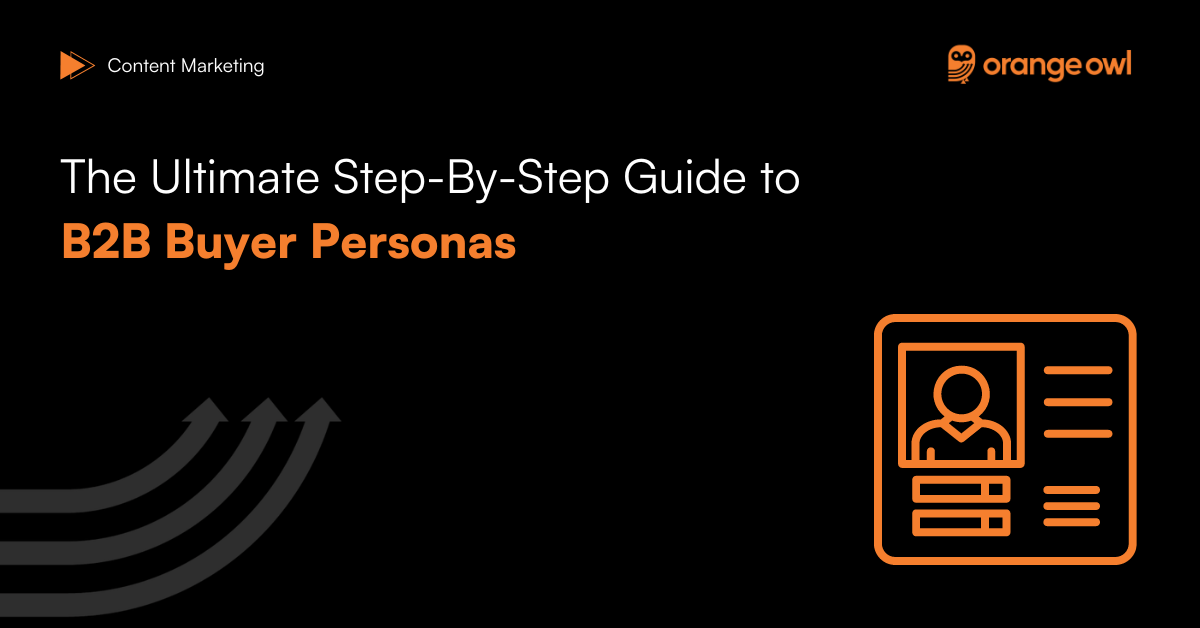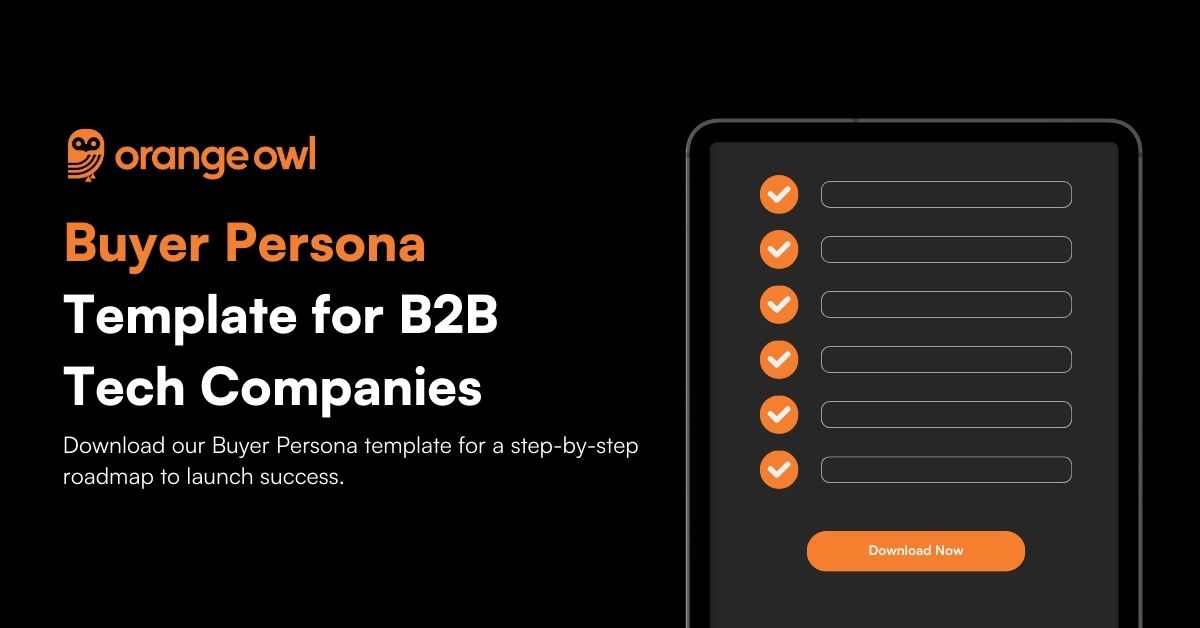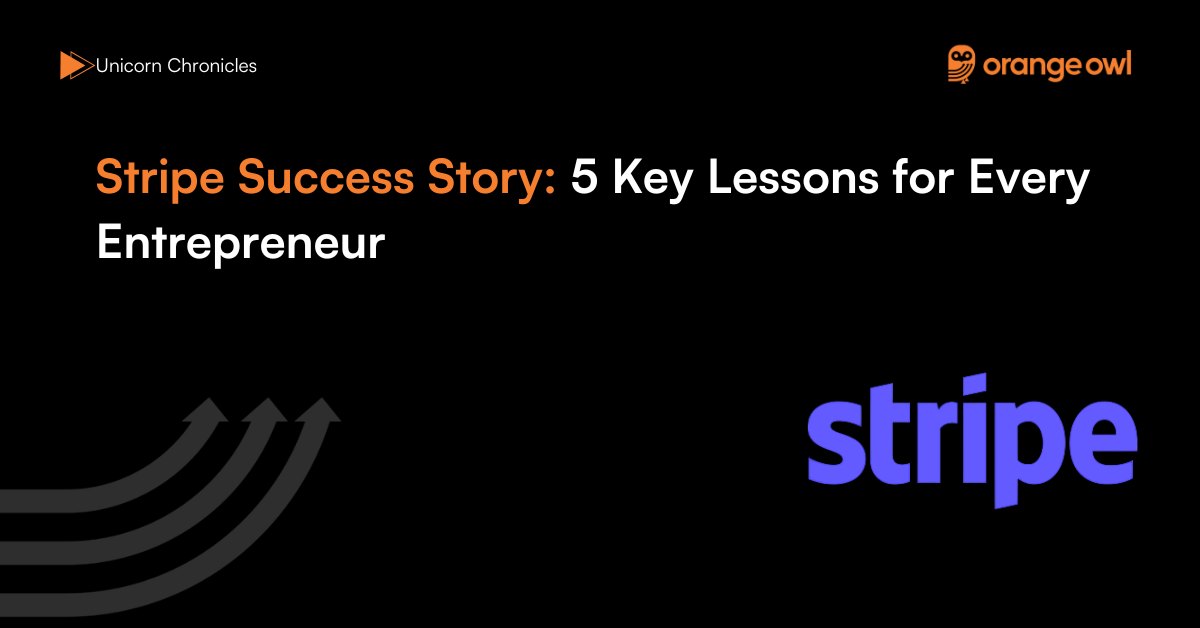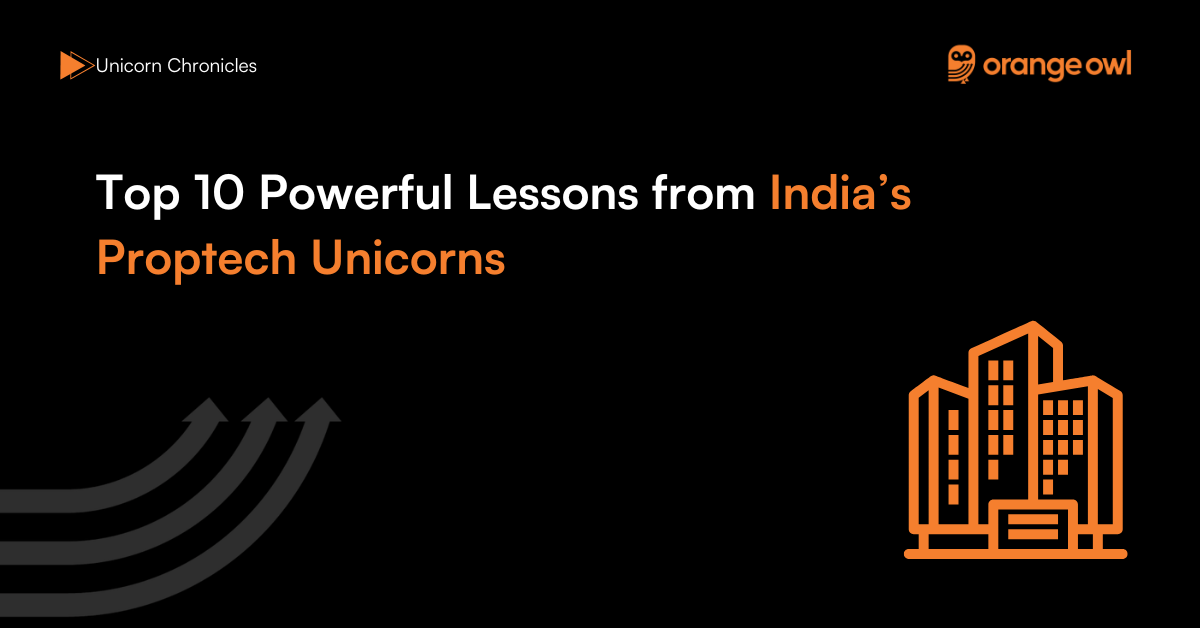The Ultimate Step-By-Step Guide to B2B Buyer Personas
Vivek Goel
January 22, 2025

Introduction
In the complex landscape of B2B marketing, understanding your target audience is not just beneficial; it’s a cornerstone of your go-to-market (GTM) strategy. B2B Buyer personas provide a detailed representation of your ideal customers based on a blend of actual data about existing customers and insightful market research. This guide delves into how to create and leverage buyer personas to refine your B2B marketing efforts, ensuring each piece of content and every marketing campaign speaks directly to the needs and challenges of your target audience.
What is a B2B Buyer Persona?
A buyer persona in B2B marketing is a semi-fictional representation of your ideal customer. This persona is meticulously constructed using a combination of real data about current customers and in-depth market research to anticipate the needs, behaviors, and decision-making processes of potential clients.
How is a B2B Buyer Persona Different from an B2B Ideal Customer Profile (ICP)?
Understanding the Distinctions
In B2B marketing, distinguishing between a Buyer Persona and an Ideal Customer Profile (ICP) is crucial as each serves a different purpose in the marketing and sales process. While they are complementary, understanding their differences can significantly enhance targeting and messaging strategies.
B2B Buyer Persona: Individual Focus
A buyer persona is a semi-fictional representation of your ideal customer based on real data and some select educated speculation about customer demographics, behavior patterns, motivations, and goals. It’s detailed and personalized, focusing on the individual level.
Example: Consider “IT Ian,” a buyer persona for a cybersecurity firm. Ian is likely in his late 30s, works as an IT manager at a medium-sized enterprise, is highly knowledgeable about tech, values advanced security features, and spends a lot of his time reading tech blogs and participating in online security forums. Marketing materials aimed at Ian would include detailed technical blogs, whitepapers, and invitations to webinars that delve into complex cybersecurity issues.
Ideal Customer Profile: Organizational Focus
On the other hand, an Ideal Customer Profile defines the type of company that would most likely buy your product or benefit from your service. It’s less about the individuals within the company and more about the company itself. The ICP focuses on factors like company size, industry, revenue, location, and market position.
Example: For the same cybersecurity firm, the ICP might focus on mid-to-large technology companies with over 500 employees, operating within high-risk industries like finance or healthcare, where data breaches can have severe repercussions. These companies would have significant budgets allocated for IT security and would be located in tech-centric cities.
Operational Uses
- ICP Application: ICPs are particularly useful in account-based marketing (ABM) strategies where the entire marketing and sales approach is tailored to each target account. For instance, if a company matches the ICP, strategies like personalized emails to key decision-makers, custom events, and targeted ads would be employed.
- Buyer Persona Application: In contrast, content and messaging ta ilored to buyer personas help in creating communication that resonates on a personal level. This approach is crucial in content marketing, direct sales conversations, and crafting user experiences that appeal to the person dealing with your product or service daily.
Synergistic Use in Strategy
Combining ICPs and buyer personas offers a powerful approach to B2B marketing. While the ICP helps in identifying which companies to target, buyer personas guide how to approach and engage the individuals at those companies. This dual approach ensures that while the outreach is organizationally appropriate, the messaging resonates personally with the individuals involved in the buying process.
Thus, while an ICP identifies the best-fit companies, buyer personas delve into the specifics of the individuals making the purchasing decisions within those companies. Using both tools in tandem allows for a nuanced strategy that addresses both corporate and personal factors in the sales process, leading to a more effective and targeted marketing effort.
Examples of B2B Buyer Personas:
IT Innovator Ian: CTO at a mid-sized tech company, Ian is always on the lookout for cutting-edge technologies that promise to enhance operational efficiency and cybersecurity.
Efficient Emily: As a procurement manager in a manufacturing firm, Emily focuses on optimizing supply chain operations to reduce costs and increase efficiency.
Startup Steve: Founder of an early-stage startup, Steve seeks scalable and cost-effective software solutions that grow with his business.
Healthcare Helen: An administrator in a large hospital, Helen aims to improve patient care through innovative health technologies.
Finance Frank: CFO at a financial services firm, Frank is focused on finding cost-effective solutions for complex compliance and financial management needs.
Why are B2B Buyer Personas Important?
Buyer personas are essential in B2B marketing for a multitude of reasons:
Strategic Content Creation
They guide the creation of content that addresses the specific interests and needs of different segments of your audience.
Enhanced Customer Journey Mapping: Personas allow for more precise mapping of the customer journey, providing insights into the various touchpoints where strategic interventions can make a significant impact.
Increased Marketing Efficiency
With personas, businesses can more effectively allocate their marketing resources to target the most promising prospects.
Statistical Advantage
Organizations using personas see a significant boost in engagement and conversions. For instance, according to HubSpot, strategies based on buyer personas can increase email open rates and click-through rates dramatically.
The Anatomy of a B2B Buyer Persona
Developing a comprehensive buyer persona involves understanding various critical elements that define an ideal customer:

Demographic Information: Includes job title, age range, education level, and income range, providing a profile of the typical individual within the target industry.
Company Information: Details such as industry, company size, and department, coupled with the individual’s role in the decision-making process, outline the business context in which they operate.
Goals and Objectives: Understanding both primary and secondary goals helps in aligning your product’s value proposition with their objectives.
Challenges and Pain Points: Pinpointing the difficulties your persona faces allows you to position your product or service as a solution.
Values and Fears: Knowing what drives their decisions and any reservations they have helps tailor your marketing strategies to better address these issues.
Preferred Communication Channels: Identifying how and where they prefer to learn about solutions and interact with vendors can optimize your marketing efforts.
Buying Criteria: Understanding the features they value most and any deal breakers aids in product development and marketing messaging.
Influences: Knowing where they get their information and who influences their buying decisions can help you focus your marketing efforts more effectively.
Preferred Content Types: Recognizing the formats that they find most helpful during their buyer journey informs your content strategy.
Common Sales Objections: Being aware of typical concerns allows your sales team to prepare more effective counter-strategies.
Top Benefits of Buyer Personas in B2B Marketing
Buyer personas are not just tools for marketers; they are the backbone of a successful B2B marketing strategy. These detailed representations of your ideal customers are foundational in shaping almost every aspect of your marketing efforts, from content creation to customer journey mapping. Below, we delve deeper into why buyer personas are indispensable in the realm of B2B marketing.
Strategic Content Creation
Buyer personas serve as a guide for crafting content that resonates with different audience segments. By understanding the specific interests, needs, and pain points of each persona, marketers can produce highly targeted content that speaks directly to each segment. This tailored approach ensures that the content is not only relevant but also effective in engaging the intended audience.
Example: A B2B software company might develop personas such as “Tech-Savvy Tim,” an IT manager looking for efficient solutions, and “Cost-Conscious Carla,” a CFO seeking budget-friendly options. For Tim, the company might create in-depth tech blogs and advanced webinars, while for Carla, they might focus on case studies showcasing the ROI of their solutions.
Enhanced Customer Journey Mapping
Personas are instrumental in mapping out the customer journey, providing a clear picture of how different types of customers move from awareness to decision-making. Understanding this journey allows marketers to identify critical touchpoints where targeted interventions can significantly impact the customer’s progression through the sales funnel.
Example: For a persona like “Decision-Maker Dave,” a CEO who focuses on strategic outcomes, the journey might include touchpoints like industry leadership roundtables or executive briefs that align with his strategic thinking and decision-making process.
Increased Marketing Efficiency
Utilizing buyer personas allows businesses to allocate their marketing resources more effectively. By focusing on the most promising prospects—those who closely align with the developed personas—companies can optimize their marketing spend, ensuring that they are reaching out to those most likely to convert.
Example: A company might discover that their persona “Startup Founder Faye” is most active on LinkedIn and values thought leadership. Investing in LinkedIn articles and targeted ads on this platform would likely yield better results than spreading resources across less effective channels.
Statistical Advantage
The use of buyer personas is backed by substantial statistical advantages. According to studies like those conducted by HubSpot, companies that utilize buyer personas and tailor their marketing strategies accordingly see significant improvements in engagement and conversions. This includes higher email open rates and click-through rates, as marketing messages are more aligned with the recipient’s expectations and needs.
Example: After implementing buyer personas, a B2B tech company noticed a 50% increase in email engagement rates by personalizing email campaigns to address the specific interests and challenges of each persona.
In B2B marketing, where the sales cycles are long and the buying decisions are complex, having a deep understanding of who you are marketing to is crucial. Buyer personas not only help in creating more relevant and engaging content but also enhance the overall efficiency of marketing campaigns, ensuring that every dollar spent is targeted towards prospects with the highest potential for conversion. By embracing and continuously refining buyer personas, B2B marketers can achieve more strategic and successful outcomes.
Top Ways to Research B2B Buyer Personas
In-depth Interviews: Talking directly to current and potential customers provides invaluable insights that surveys alone cannot match.
Customer Feedback Analysis: Examining feedback from existing customers can reveal common trends and priorities that might not be obvious at first glance.
Segmentation Analysis: Using advanced data analytics tools to segment your customer base can help identify distinct groups within your market.
Social Listening: Monitoring social media channels and industry forums can provide real-time insights into what topics and challenges are most pertinent to your personas.
Steps to Create Detailed B2B Buyer Personas for Your Business
Step 1. Gather Demographic and Firmographic Information
Start by collecting basic demographic information such as job title, age, and education level, alongside firmographic details like industry type, company size, and department. This data helps profile typical individuals and the context of their business environment.
Example: For a SaaS product, your persona might be ‘IT Manager, mid-30s, works in a company with 200-500 employees in the technology sector.’
Step 2. Understand Professional Goals and Challenges
Identify the primary and secondary goals these personas are trying to achieve and the challenges they face in their roles. This helps in aligning your product’s value proposition with their objectives and the solutions they need.
Example: An IT Manager’s goal might be to enhance system efficiency and security, with challenges such as limited budget and resistance to new technology adoption.
Step 3. Assess Values and Decision-Making Factors
Outline what values influence their decisions, such as reliability, cost-efficiency, or innovation, and understand their fears, like compliance risks or technology failures.
Step 4. Determine Preferred Communication Channels
Knowing whether they prefer to learn about new solutions through webinars, industry reports, or direct emails, and how they prefer to communicate with vendors, can tailor your outreach effectively.
Example: They might prefer detailed email communications supplemented by case studies and whitepapers.
Step 5. Define Buying Criteria and Deal Breakers
List the features they consider most crucial in a solution and deal breakers that would deter them from choosing your product. This ensures that your marketing messages highlight the right features.
Example: A deal breaker might be the lack of compliance with industry-specific security standards.
Step 6. Identify Influences and Content Preferences
Determine where they typically gather information that influences their buying decisions—this could be specific industry blogs, LinkedIn, or conferences. Also, identify the types of content that aid their decision-making process, such as user reviews, product demos, or expert insights.
Step 7. Address Common Sales Objections
Preparing responses to common objections they might have during the sales process can empower your sales team to convert prospects effectively.
Example: If a common objection is the perceived complexity of implementation, provide clear documentation and customer testimonials on the ease of setup and integration.

Mistakes to Avoid When Creating B2B Buyer Personas
- Overlooking Minor Details: Small details can sometimes offer the most significant insights into customer behaviors and preferences.
- Ignoring Negative Personas: Understanding who is not a good fit for your product is as important as knowing who is.
- Relying Solely on Quantitative Data: Qualitative insights often provide the context and depth needed to make your personas truly useful.
Conclusion
B2B Buyer personas are not just useful tools; they are essential elements of a successful B2B go-to-market strategy. By deeply understanding the individuals who make purchasing decisions, companies can craft more effective marketing messages, develop better products, and ultimately drive more sales. This detailed exploration of buyer personas offers a foundation on which businesses can build to refine their marketing strategies and achieve greater success in their B2B engagements.
Frequently Asked Questions (FAQs) about Buyer Persona
Regular updates are crucial as market conditions, customer behaviors, and business objectives evolve. It’s recommended to review and refine personas annually or after significant changes in the market.
Yes, by aligning marketing efforts with the specific needs and behaviors of defined buyer personas, businesses can accelerate the buyer’s journey from awareness to decision, effectively shortening the sales cycle.
Common pitfalls include neglecting minor but insightful details, focusing only on positive personas without considering negative personas, and relying too heavily on quantitative data without qualitative insights.
By understanding the preferences and pain points of each persona, marketers can create highly targeted and relevant content that resonates better, leading to higher engagement and conversion rates.
In ABM, buyer personas help tailor marketing and sales strategies to the specific needs and characteristics of each account, ensuring more personalized and effective engagement with key decision-makers.



